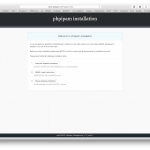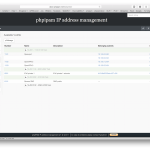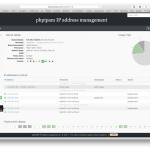Vendor Whitebox Switches – Better Together?

Whitebox switching has moved past the realm of original device manufacturers and has been taken up by traditional networking vendors. Andre Kindness (@AndreKindness) of Forrester recently posted that he fields several calls from his customers every day asking about a particular vendor’s approach to whitebox switching. But what do these vendor offerings look like? And can we predict how a given vendor will address the whitebox market?
Chocolate In My Peanut Butter
Dell was one of the first traditional networking vendors to announce a whitebox switch offering that decoupled the operating system from the switching hardware. Dell offered packages from Cumulus Linux and Big Switch Networks alongside their PowerConnect lineup. This makes sense when you consider that the operating system on the switch has never been the strong suit of Dell. The PowerConnect OS is not very popular with network engineers, being very dissimilar from more popular CLIs such as Cisco IOS and its look-alikes. Their attempts to capitalize on the popularity of Force Ten OS (FTOS) and adapt it or use on PowerConnect switches has been difficult at best, due to the divide been hardware architecture of the two platforms.
What Dell is very good at is Continue reading
The Big YANG Theory
by Hariharan Ananthakrishnan, Distinguished Engineer - December 9, 2014
At this point in the evolution of the network, we think it is important to outline the history, pros, cons, and future of YANG. The data model in YANG helps in managing configuration for both traditional and software defined networks (even SDN needs some persistent state). Standardized YANG models will help in managing true multi-vendor networks.
What Is YANG Exactly?
As I outlined in “The Current State of SDN Protocols,” YANG is a data modeling language used to model configuration and state data manipulated by the Network Configuration Protocol (NETCONF), NETCONF remote procedure calls and NETCONF notifications. YANG was developed by the NETMOD working group in the IETF and was published as RFC 6020.
In the past few years, YANG gained a lot of traction with the open-source community. There are tools developed to validate YANG and transform YANG specification into other formats. Some tools can even generate JAVA code given a YANG specification. Router vendors noticed the traction and started contributing to model definitions, standardization and eventual support in their products.
My Experience
I got involved with YANG when Continue reading
Last Call: Overlay Virtual Networks in Software Defined Data Centers
If you want to get a free copy of my Overlay Virtual Networks in Software-Defined Data Centers book, download it now. The offer will expire by December 15th.
Just published: Enterprise IPv6 videos
The edited videos for my Enterprise IPv6 webinars have been published on my.ipspace.net. Enjoy!
Operations Manager to OMi Migration Path
HP has finally announced a migration path for Operations Manager to OMi. It’s about time too. This looks like a good path. If you want to stick with HP Software for managing your services, you should be investigating it.
The writing’s been on the wall for a while. HP has stopped investment in Operations Manager. I asked last year if HP had abandoned Operations Manager. This year I noted that it was kicking, but only just. My advice was:
To customers using HP OM…start planning your migration away from it, if you haven’t already. To customers considering purchasing it: Don’t, unless you’re buying it as part of an overall BSM/OMi implementation, and the salesfolk have guaranteed you can change your licensing over at no cost in future.
Well, HP has finally announced the OM2OMi Evolution program. Key points:
- License entitlement – OM servers can get equivalent licenses for OpsBridge Premium
- Operations Agent 11 works with both OM and OMi, so you don’t have to do the Agent migration at the same time
- Migration tools to assist with switching over
They do include this quote:
Well no one at HP is going to try to force you into replacing a product you love. Rest Continue reading
Johannesburg: CloudFlare’s 30th data center

Fire up the celebration braai, Jozi! CloudFlare is here, and it’s a big one. An important milestone (our 30th data center) calls for an equally important new location: Johannesburg, South Africa, our first data center in Africa.
For the local audience: Steek aan 'n braai ter viering, Jozi! CloudFlare is hier en dis 'n groot een. 'n Belangrike mylpaal (ons 30ste datasentrum), vra vir ewe belangrike en nuwe ligging: Johannesburg, Suid-Afrika, ons eerste datasentrum in Afrika.
Now serving Southern Africa
Prior to now nearly all CloudFlare traffic delivered to Africa was served from our London, Amsterdam and Hong Kong data centers with round trip latency of 200-350ms. Bandwidth in the region is notoriously expensive (it would make even the Australians blush) making it prohibitive to enter into the continent. That is, before now. Just a few months ago we were fortunate to enter into discussions with a number of partners in the region that share CloudFlare’s vision to help build a better Internet.

Our Johannesburg data center will not only make sites on CloudFlare more performant for Internet users in South Africa, but also for Internet users across all of Southern Africa (and beyond). From Botswana to Kenya, users Continue reading
Wireshark tid-bit: Quickly gathering the contents of a PCAP.
I don’t know about you but when I find myself performing packet captures and analyzing PCAPs I usually only know the symptoms of the issue I am attempting to troubleshoot. IE: Connection timeouts, slow response, long transfer times, etc. I usually don’t know much more than that, only in rare occasions do I get a […]phpipam v1.1 released :: security fixes, performance improvements, mod_rewrite optional
Dear all, I am happy to announce new version of phpipam IP address management – version 1.1.
This release fixed some bugs, provided some new features, but most importantly it was focused on:
- Security fixes (SQL injection, XSS scripting, crypting DB passwords, brute-force attack prevention, …)
- Performace improvements (Caching, reusing SQL connection),..
- mod_rewrite no longer required, selectable URL structure under settings
Some screens:



If you find phpIPAM useful for your company donations would be highly appreciated ![]()
You can demo it here: http://demo.phpipam.net/
You can download it on sourceforge site: phpipam-1.1.
Special thanks to all the people submitting bug reports, translators and feature testers!
Full changelog for this release is:
Enhancements: ---------------------------- + Caching of SQL results to avoid multiple queries; + Reduced number of DB queries; + Added selected mail notifications to admins to be notified on IP/subnet change; + Added new subnetId index to ipaddresses table that significantly improves network loading; + Now using only 1 network connection towards MySQL server; + Updated pagination; + mod_rewrite no longer required, selectable URL structure under settings; + Added option not to display free ranges; + Added option to set maximum VLAN number; + Selectable custom fields to Continue reading
Load Balancing in Google Network
Todd Hoff (of the HighScalability fame) sent me a link to an interesting video describing load-balancing mechanisms used at Google and how they evolved over time.
If the rest of the blog post feels like Latin, you SHOULD watch the Load Balancing and Scale-Out Application Architecture webinar.
The beginning of the story resembles traditional enterprise solutions:
Read more ...Powerpoint Doesn’t Stink
“Presentations are just a waste of time.”
“Powerpoint stinks.”
“Can’t we do something other than another long, boring, presentation?”
“We should just ban Powerpoint.”
If I had a nickel for every time I’ve heard someone complain about Powerpoint, or presentations, I’d be rich enough to quit work and stop blogging. ![]() Isn’t it about time we were honest with ourselves, though? Isn’t it about time we told the truth about this particular problem? Blaming Powerpoint for bad presentations is like blaming word processors for badly written books.
Isn’t it about time we were honest with ourselves, though? Isn’t it about time we told the truth about this particular problem? Blaming Powerpoint for bad presentations is like blaming word processors for badly written books.
The problem isn’t Powerpoint. The problem is the person you see every morning looking at you in the mirror. The problem isn’t the tool, it’s that we stink at organizing and presenting our thoughts in any sort of reasonable way. So let’s talk about how to build a better presentation.
To begin: forget everything you’ve ever read in a book about making elevator pitches, making a presentation that impacts, with dash, flair, or whatever. There is a set of presentations that present as a story, with flair and dash, and there is another set that just doesn’t.
As an example, I was the Routing Protocols SGM for Cisco Live for Continue reading
Christmas Change Freeze – Good or Bad?
We’re approaching Christmas, and for many of us, that means we’re about to enter an extended change freeze. This means an extended period when we shouldn’t change anything, hoping to improve stability. ITIL Change Management tells us this is good. I’m not convinced.
The Christmas Change Freeze
Many businesses impose some form of change freeze across all production systems during the Christmas/New Years period. In theory, all network/compute/storage changes are deferred until January. In practice, high priority changes will still be made if you jump up and down enough. The rate of change should still be lower during this period though.
Some change freezes may only run from just before Christmas until early January. Other businesses will go into a change freeze for as long as five weeks. My experience is that Southern Hemisphere businesses have a longer change freeze than Northern Hemisphere ones. I assume this is because many staff take extended leave over the Austral summer.
Why Have One?
There are differing opinions about the usefulness Continue reading
Cisco VIRL ESXi Installation Notes
Note: I was part of the early VIRL beta program. For my efforts in that beta, I was provided a free one year subscription to VIRL, worth $199. I’ve got Cisco VIRL up and running on ESXi 5.5. The installation was mostly smooth, but there were some hurdles to overcome. Here are my installation notes […]3 Months With Little Streaming Boxes
You might recall that I dropped Dish Network a few months back, using a Roku 3 and Apple TV instead. How’s it been going? Just fine, really. No regrets. Here’s what I’ve learned. 1. We use the Roku 3 for almost everything. The Roku has a clean, intuitive, simple, responsive interface. Plus, the Roku […]Scaling Distributed Systems Is Hard
Stumbled upon a hilarious description of challenges encountered when trying to scale distributed systems (cluster of controllers running centralized control plane comes to mind).
It starts with “If someone tells you that scaling out a distributed system is easy they are either lying or drunk, and possibly both,” and gets better and better. Enjoy!
Monitoring leaf and spine fabric performance
A leaf and spine fabric is challenging to monitor. The fabric spreads traffic across all the switches and links in order to maximize bandwidth. Unlike traditional hierarchical network designs, where a small number of links can be monitored to provide visibility, a leaf and spine network has no special links or switches where running CLI commands or attaching a probe would provide visibility. Even if it were possible to attach probes, the effective bandwidth of a leaf and spine network can be as high as a Petabit/second, well beyond the capabilities of current generation monitoring tools.
The 2 minute video provides an overview of some of the performance challenges with leaf and spine fabrics and demonstrates Fabric View - a monitoring solution that leverages industry standard sFlow instrumentation in commodity data center switches to provide real-time visibility into fabric performance. Fabric View is an application running on InMon's Switch Fabric Accelerator SDN controller. Other applications can automatically respond to problems and apply controls to protect against DDoS attacks, reduce latency and increase throughput.
Visit sFlow.com to learn more, evaluate pre-release versions of these products, or discuss requirements.
Alteon’s REST API
AlteonOS has a reach REST API for monitor, operation, and configuration.REST can be used/called with verity of programming languages, or even just using wget. However, since this blog was already using TCL for AppShape++ scripting, we may as well keep using TCL for REST too. However, RESTing with TCL is a bit pain in the ..., so this time I'll use python instead.
All most forgot to explain what REST is. Its a way to run remote procedures calls using HTTP. Example calls:
- Read interface counters
- Update real's weight
- Bring down a real inside a group
Here are two screenshots. The first is how I get the current status of real 1, and the second is how I disable real 1.
Lab goal
Using the base setup, create python script to toggle the status of real 1 from not enabled to enabled and from disable to enable.
